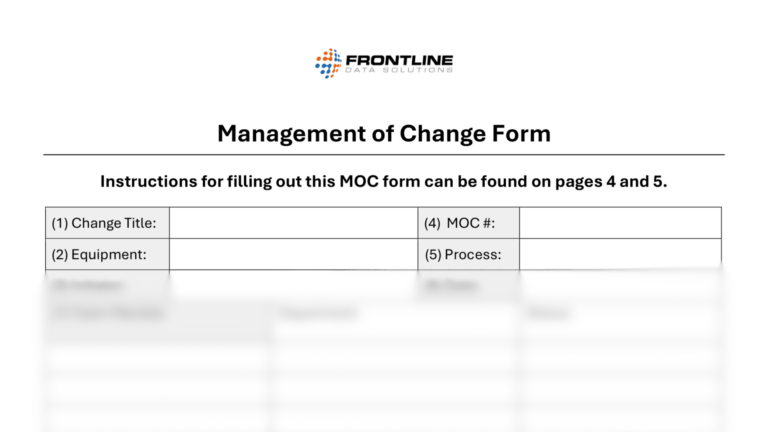Creating a more formal change management process can help reduce errors and improve your site’s performance. But even the most structured approach won’t work if your team doesn’t follow the steps and document everything correctly. The right strategy needs both a solid process and employee buy-in to have a positive impact on the business.
Free form!
Download this management of change form to see which information your team should document along the way.
Formal vs. informal change management
The biggest difference between formal and informal change management is documentation.
An informal process typically involves email, phone, or in-person communication to manage changes. This means that there’s often no clear record of the process, which makes auditing and problem solving more difficult.
A formal change management process, however, centers around detailed and comprehensive documentation from start to finish. This means there’s more accountability and visibility for both employees and leaders.
What triggers a need for formal change management?
Companies often start out with an informal process for managing changes, especially if their operations are small. But over time, it becomes more difficult to keep track of everything and ensure safe and effective implementation.
Here are just some of the circumstances that might trigger the need for a more structured approach:
- You failed an internal or external compliance audit.
- There’s a major operational failure like a safety incident, recall, or lost time event.
- You’re unable to solve an issue because your records are insufficient.
- You expand to multiple locations and need to standardize your process.
- Your current processes are too complex to manage changes informally.
- The company restructures and there are lots of process and personnel changes.
- Your processes become regulated under OSHA’s PSM standard.
Of course, there’s also the fact that you might just want to improve how your team manages everything. Even changes within simple processes can become increasingly difficult without a standard approach.
Components of a formal change management process
A formal change management process begins with the submission of a change request which goes through an approval process before your team acts. Here are the basic steps you should follow:
- Request: Someone submits a request for a change to things like equipment, procedures, policies, or personnel.
- Approval: A committee or individual reviews the change request and either approves or denies it for implementation.
- Collaboration: If necessary, the change management team completes an in-depth review and researches how to move forward with the change.
- Implementation: The team completes all the tasks needed to roll out the change.
- Pre-startup: The team completes a final review of the implementation and ensures that everything is in order.
- Startup: The team fully introduces the change throughout the organization and closes the loop on the initial request.
Having a formal change management process means that your team follows the same steps every time regardless of the project. That way, you can avoid missing a critical step and prevent downstream issues once the change goes into effect.
Frontline MOC software
The key to formalizing the change management process is documenting everything because it:
- Allows you to keep a close eye on critical organizational changes
- Makes it easier to conduct compliance audits
- Provides accountability for any mistakes or oversights
- Gives you more data to be able to troubleshoot any issues or incidents
The best practice for documentation is using change management software to log all projects and activities.
Our Frontline MOC tool centralizes your data so you can get better oversight of what your team’s working on. Plus, it makes communication regarding changes easier to manage because you don’t have to manually record emails, calls, and in-person conversations.
Frontline MOC for change management documentation
Check out this video to see the workflow that our clients use to formally manage changes.
The biggest benefit of using Frontline MOC is that it can drastically reduce operational costs for your business. These savings come in many forms: regulatory fines, lost time incidents, quality issues, production shutdowns, recalls, etc. By documenting everything with Frontline MOC, your team is less likely to make the mistakes that lead to these costly events.
Like any tool, however, change management software only works if you use it properly. If you want to introduce a formal change management process, you’ll have to get everyone’s participation. Once everyone understands how the new process works, it’s easier to focus on improving documentation habits and creating an effective strategy moving forward.





